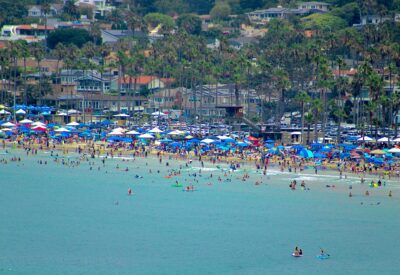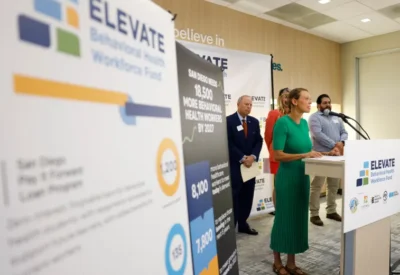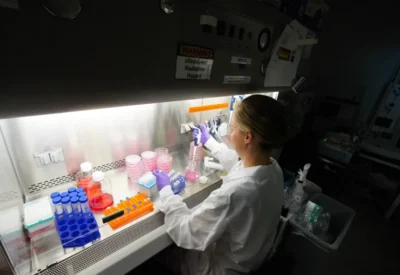San Diego unemployment drops as tourism hiring surges
June 20, 2025 – San Diego’s jobless rate dropped in May as tourism hiring surged ahead of the busy summer season.
The region’s unemployment rate was 4%, down from a revised 4.1% the previous month, state labor officials said Friday. The national unemployment rate was also 4%, and California’s average was higher at 4.9%.
Leisure and hospitality hiring rose with 3,400 jobs added in a month. In addition to the usual vacation goers, extra help is always needed for San Diego Pride and San Diego Comic-Con. Work in the tourism sector includes positions at hotels, bars, casinos and restaurants.
There were 207,000 jobs in the leisure and hospitality sector in May, on pace to reach a record by its typical peak in August. The most workers the industry ever had predates the pandemic with 208,800 tourism jobs in July 2019.
Phil Blair, head of San Diego staffing agency Manpower, said the tourism industry still must face headwinds out of its control going into the summer: The Trump administration has added more nations to the U.S. travel ban and its ongoing war of words with Canada, whose citizens are some of the biggest tourism spenders in California. Gov. Gavin Newsom launched a campaign in April to lure Canadians back to the Golden State.
Blair attributed much of the surge in tourism hiring to the opening of the Gaylord Pacific Resort and Convention Center in Chula Vista, which has hired more than 1,000 people. Still, he said tourism — like most local industries — are in a holding pattern until the president’s tariff policies are more certain. He isn’t seeing a ton of hiring requests at his staffing firm (besides health care), but also not a lot of layoffs either — and workers are staying put.
“The overall picture is everyone is sort of hunkered down,” Blair said. “The turnover ratio is really low. People are afraid to change jobs.”
The other big sectors to add workers from April to May were government (mainly state education) with 1,000; other services (laundry, maintenance, religious) with 900; private education and health services (nursing, social assistance, private schools and universities) with 800; trade, transportation and utilities (mostly retail), also added 800; and construction with 400.
Job losses were minimal in May: Manufacturing was down by 400, professional and business services (legal, scientific, waste management, architectural) down by 200 and information (telecommunications, newspapers, publishing industry) down by 100.
San Diego County’s jobless rate would have been lower if its labor force didn’t keep growing. The labor force — adults who either have a job or are actively looking for one — was 1.68 million in May, up 2.8% in a year.
The labor force hit a high of 1.69 million in March. In May, while down slightly, it still represented the second-largest labor force in San Diego County history. The labor force dipped to 1.53 million in May 2020 — the lowest in the past few years — as pandemic lockdowns closed many businesses.
When adjusted for seasonality, the San Diego County unemployment rate was closer to 4.6%, said Daniel Enemark, chief economist at the San Diego Regional Policy & Innovation Center. That compares with the 4.2% U.S. average and 5.3% in California.
“The problem is that we aren’t increasing employment as fast as we normally would at this time of year,” he said. “Our unemployment rate has decreased by 0.2 percentage points since March; the average decrease over the last 15 years was 0.6 points.”
An analysis from Beacon Economics also didn’t hit a positive note, saying long-term employment growth for California is behind the nation. Since February 2020, total nonfarm employment in the state has expanded 2% compared with a 4.8% increase nationally.
On an annual basis, San Diego County’s biggest growth industry was private education and health services with 12,400 new jobs. Most of the gains were for health care and social assistance. Other big gainers were government with 8,800 new positions and leisure and hospitality, with 3,200.
Gains were offset by big losses in manufacturing, shedding 3,800 jobs; professional and business services, down by 2,400; financial activities (real estate, insurance, investments), down by 1,100; and information, down by 1,000.
San Diego’s federal workforce seems to be only mildly affected by large cuts by the Trump administration. There were 23,800 nonmilitary federal workers in San Diego County in May, down 800 positions in a year. The cuts could be more severe and just not showing up on reports, with many workers taking buyouts that keep them listed as employed until September.
San Diego’s nonmilitary federal workforce has tended to yo-yo depending on administrations and other factors. It hit a high point in 1990 of 27,500, based on annual averages provided by the state Employment Development Department. It hit a low of 20,000 in 2004 and 2005, steadily increasing ever since.
The position with the most job openings in May in San Diego County was retail salespersons, with 1,873 ads, according to state data that aggregates job postings during the month. It was followed by registered nurses, with 1,679; home health and personal care aides, with 1,075; and front-line supervisors of retail sales workers, with 919.
Employers with the most job ads were Sharp Healthcare, Apple, Qualcomm, Scripps Health, UC San Diego, General Atomics and Domino’s Pizza.
State officials do not seasonally adjust jobless rates for individual counties. Compared with other parts of California, San Diego County was on the lower end with its unadjusted rate of 4%.
The rate was 5.4% in Los Angeles County, 3.6% in Orange County, 3.6% in San Francisco County, 3.8% in Santa Clara County, 5.6% in Santa Cruz County and 4.9% in Riverside County.



